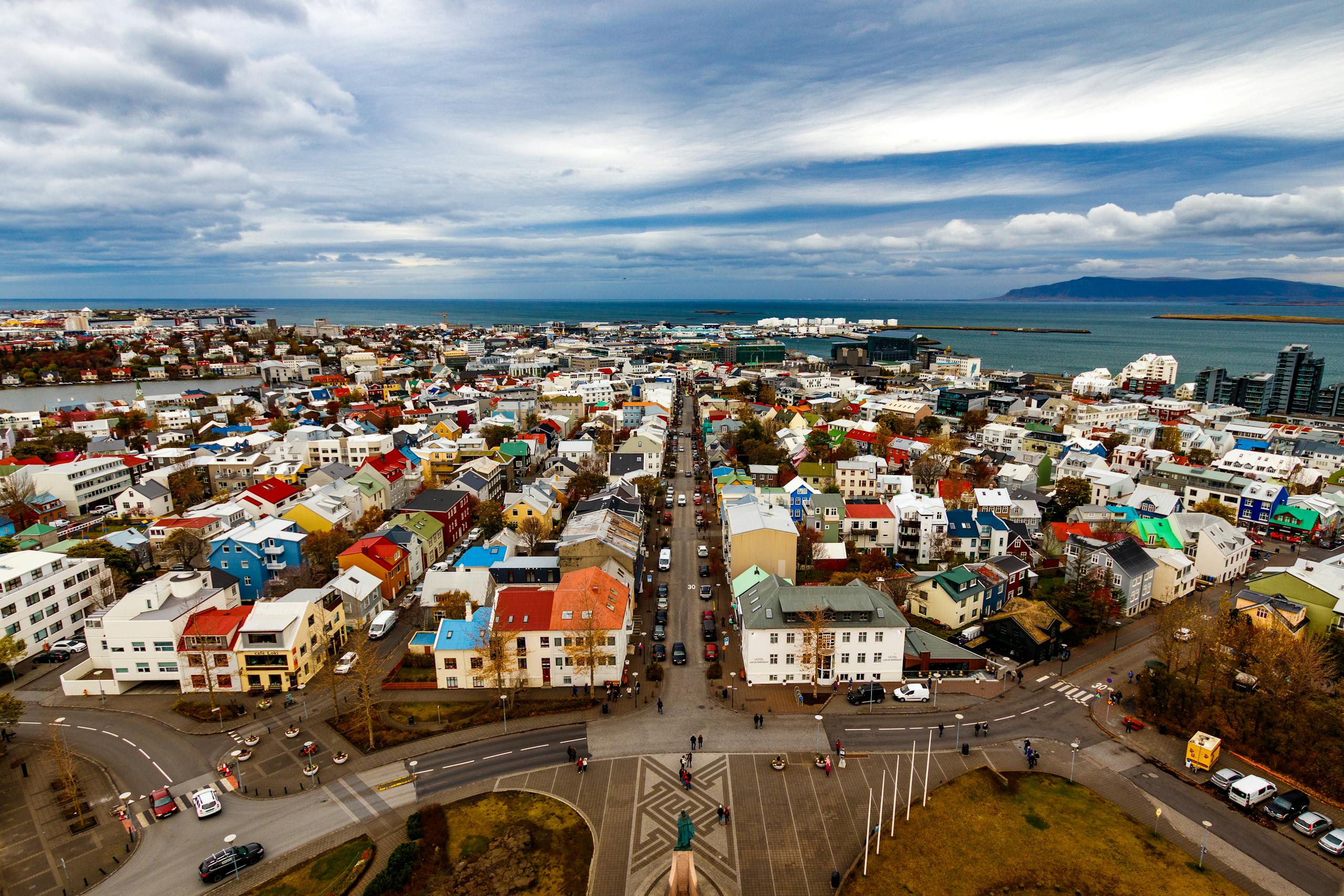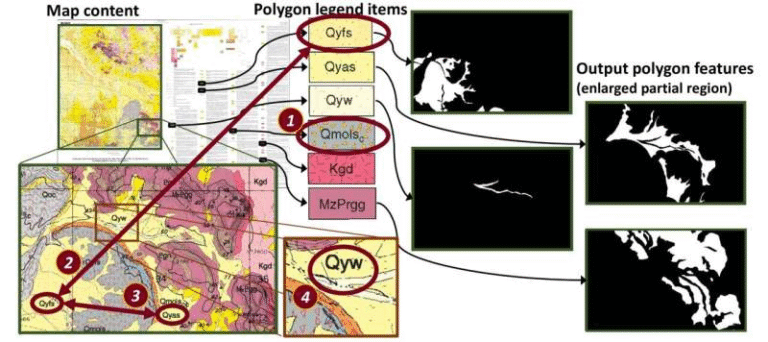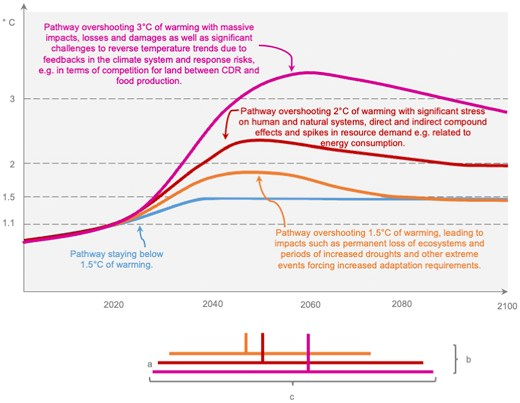Scientists Warn: The Atlantic Ocean’s “Conveyor Belt” May Collapse After 2100

The Atlantic Meridional Overturning Circulation (AMOC), which includes the well-known Gulf Stream, has long been one of the most important systems regulating Earth’s climate.
A new study published in Environmental Research Letters paints a troubling picture: under high-emission scenarios, the AMOC could collapse sometime after 2100. Even more concerning, the study shows that a shutdown is possible not only in high-emission futures but also in some intermediate and low-emission pathways.
This isn’t a small climate quirk. The AMOC is a massive system of ocean currents that transports heat, regulates rainfall, and keeps much of Europe relatively mild in winter. If it falters, the world will face major climate disruptions — harsher European winters, hotter and drier summers, chaotic tropical rainfall shifts, and long-lasting changes in global weather systems.
Let’s walk through what this new research says, why the AMOC matters so much, how scientists came to these conclusions, and what it could mean for the future of our planet.
What Exactly Is the AMOC?
The Atlantic Meridional Overturning Circulation functions like a gigantic conveyor belt for the ocean. Warm, salty waters from the tropics move northward near the surface. In the far North Atlantic, these waters cool, become denser, and sink to the depths, flowing back south.
This circulation isn’t just an oceanic curiosity — it helps distribute heat across the globe. It’s the reason northwestern Europe is warmer than other regions at similar latitudes. It influences monsoons, rainfall patterns, and storm tracks. Without it, much of the climate balance we take for granted would unravel.
What the New Study Revealed
The study analyzed extended climate model runs from CMIP6 (Coupled Model Intercomparison Project). These models are also used by the Intergovernmental Panel on Climate Change (IPCC), but most standard simulations usually stop at the year 2100. In this case, researchers pushed the models much further — up to the years 2300 and even 2500.
Here’s what they found:
- In all nine high-emission scenarios, the AMOC transitioned into a weak, shallow circulation state where its deep overturning component shut down completely.
- Even in some intermediate and low-emission scenarios, the same collapse occurred, though less consistently.
- The trigger was the breakdown of deep winter convection in the Labrador Sea, Irminger Sea, and Nordic Seas. Normally, in these regions, cold air chills the surface water enough that it sinks, helping to drive the conveyor belt. But as the planet warms, winters aren’t cold enough for this process. Less heat escapes from the ocean, and surface waters remain too warm and buoyant to sink.
Once this deep mixing collapses, self-reinforcing feedback loops kick in:
- The reduced sinking means the surface becomes fresher and less salty.
- Fresher water is lighter and even less likely to sink.
- The weaker currents further slow down heat transport.
- This cycle locks in the weakening process.
After the tipping point, the heat carried northward by the AMOC drops drastically — below 20% of today’s levels, and in some models almost to zero.
Feedback Loops and Tipping Points
One of the most striking findings is that after the tipping point is crossed, the collapse becomes irreversible. Even if emissions were somehow reduced afterward, the weakened circulation would sustain itself through feedback mechanisms.
Another point is timing. In the simulations, the collapse of deep mixing in the North Atlantic occurs within the next few decades, and once triggered, the full shutdown of the AMOC follows about 50 to 100 years later.
Researchers also highlight that these models may underestimate risks because they do not account for all possible sources of freshwater inflow, such as the large and accelerating melt from Greenland’s ice sheet. Adding that extra freshwater could destabilize the AMOC sooner than expected.
Real-World Observations
Interestingly, current observations align with some of the model trends. Over the last five to ten years, scientists have noticed a downward trend in deep winter mixing in these same North Atlantic regions. While this could be natural variability, it is also exactly the kind of early warning sign predicted by the models.
Global Consequences of an AMOC Shutdown
If the AMOC were to shut down, the climate impacts would be dramatic and widespread:
- Northwestern Europe would see much colder and harsher winters, as the northward heat transport drops off.
- Summers in Europe would likely become drier and hotter, intensifying drought risks.
- Tropical rainfall patterns would shift, disrupting monsoons in Africa and Asia, and impacting agriculture and water supply for billions of people.
- The U.S. East Coast could face extra sea level rise as Atlantic waters redistribute.
- The collapse could also interact with other climate tipping points, like accelerated ice loss, further amplifying global risks.
Why This Matters More Than We Thought
Many people assume climate change risks end with the year 2100, because that’s where most reports stop. But this study shows that the real story continues long after, and the long-term risks may be more serious than previously realized.
Earlier estimates often placed the AMOC shutdown as a low-likelihood event within this century. Now, some scientists argue the chance may be closer to 25% rather than the 10% that was often cited. And with more evidence of weakening already happening, the possibility of a sooner-than-expected collapse is on the table.
Could Cutting Emissions Still Help?
The short answer: yes, but with limits.
Reducing greenhouse gas emissions quickly would significantly reduce the risk of triggering a collapse. It may not eliminate the possibility altogether, but it could delay or weaken the transition, buying the world more time to adapt.
The researchers stress that it’s too late to completely rule out an AMOC shutdown. However, every bit of emissions reduction lowers the chance of crossing that tipping point soon.
A Broader Look: AMOC in Earth’s Climate System
To better understand the stakes, it helps to zoom out. The AMOC is just one piece of a complex Earth system with multiple tipping points:
- Greenland ice sheet melt adds freshwater that dilutes salty ocean waters, making them lighter and harder to sink.
- Arctic sea ice decline changes atmospheric circulation, which in turn influences ocean heat loss.
- Amazon rainforest dieback and permafrost thawing could release massive amounts of carbon, feeding back into warming and further stressing the AMOC.
What makes the AMOC so critical is that it’s a global climate stabilizer. Its collapse wouldn’t just affect Europe and the Atlantic, but weather systems across the planet.
How Scientists Monitor the AMOC
Because of its importance, the AMOC is closely monitored. Tools include:
- Moored instruments in the Atlantic that measure temperature, salinity, and currents.
- Satellites that observe sea surface height and temperature.
- Deep ocean surveys that track changes in density and mixing.
These observations are essential, but they also highlight a challenge: long-term continuous data is limited. The ocean is vast, and changes unfold slowly, making it hard to spot tipping points until they’re already underway.
Uncertainties and What We Don’t Know
It’s important to recognize the uncertainties:
- Different models give different timeframes, ranging from collapse after 2100 to as early as 2060s.
- Natural variability can mask or mimic longer-term trends.
- The exact amount of Greenland melt and its influence on the AMOC is still under study.
- Even if a collapse happens, the pace could vary — from a slow, drawn-out weakening to a more rapid shutdown.
Despite these uncertainties, the direction of change is clear: the AMOC is weakening, and the risk of collapse grows with higher emissions.
Why You Should Care
This isn’t just abstract science. An AMOC shutdown would affect agriculture, water supplies, storm patterns, and economies worldwide. It would destabilize climate systems for centuries or millennia, well beyond our lifetimes.
The big takeaway is straightforward: the AMOC is vulnerable, and the choices we make today about emissions could decide whether it remains stable or tips into collapse.
Final Thoughts
The AMOC is Earth’s climate powerhouse — and the latest science warns it’s not as stable as once thought. The study highlights how urgently we need to cut emissions, invest in better monitoring, and prepare for potential large-scale disruptions.
While the collapse may not be guaranteed, the fact that models now show it happening in a wide range of scenarios — including some moderate ones — is a wake-up call.
Reference
The research is published as: “Shutdown of northern Atlantic overturning after 2100 following deep mixing collapse in CMIP6 projections” by Sybren Drijfhout, Joran R Angevaare, Jennifer Mecking, René M van Westen, and Stefan Rahmstorf (2025, Environmental Research Letters).
Read the study here





